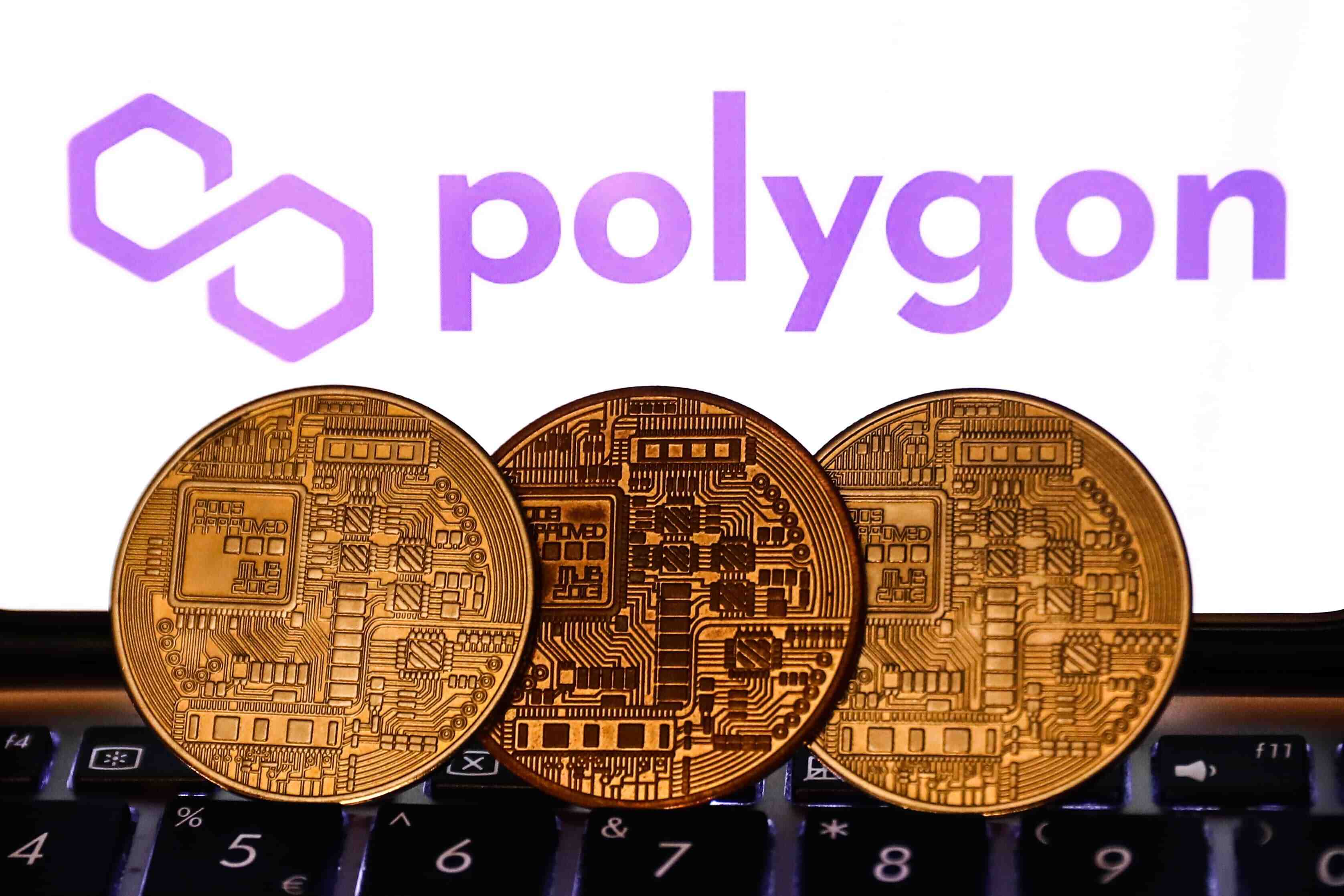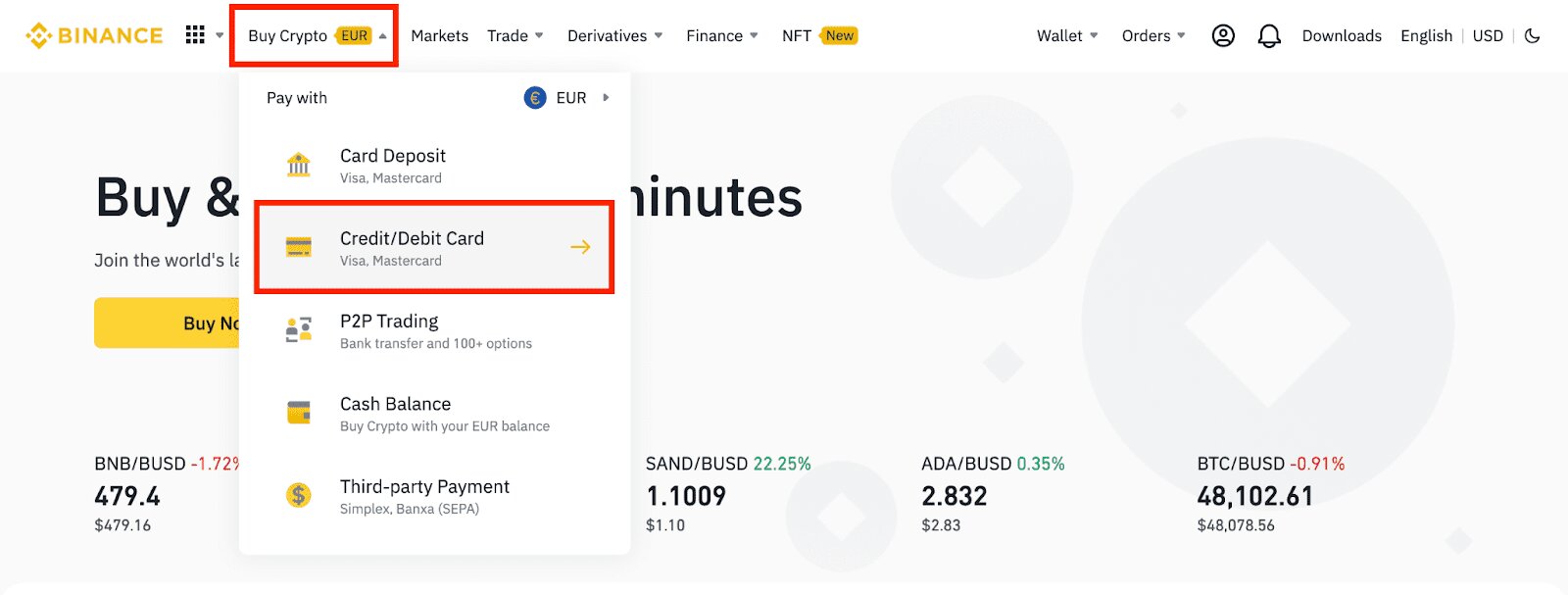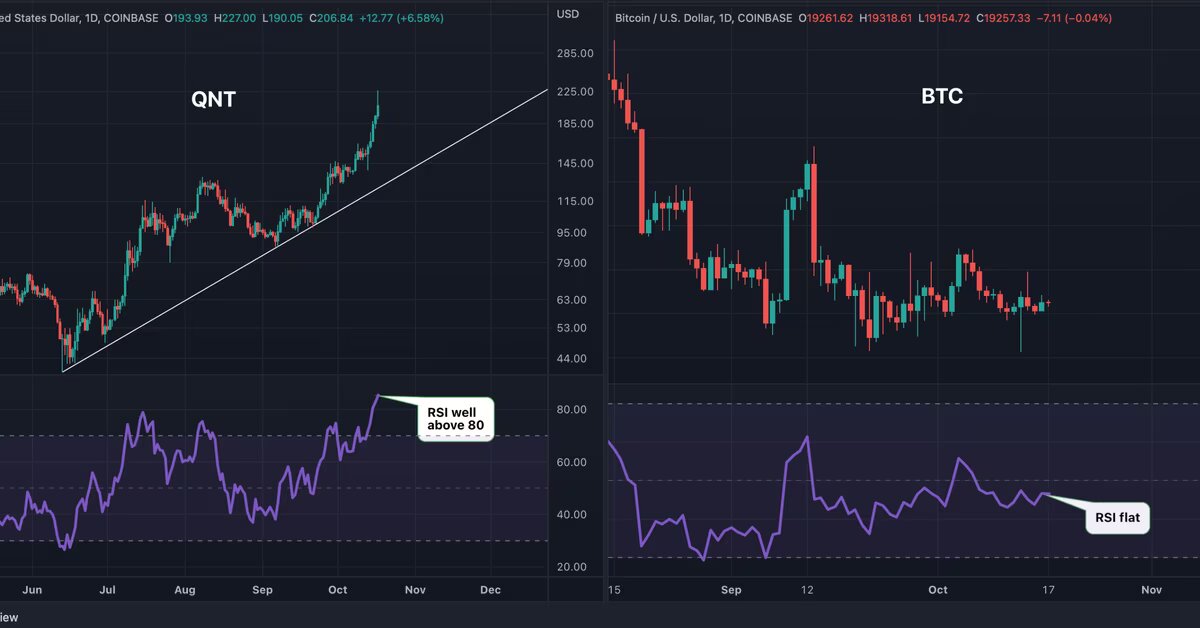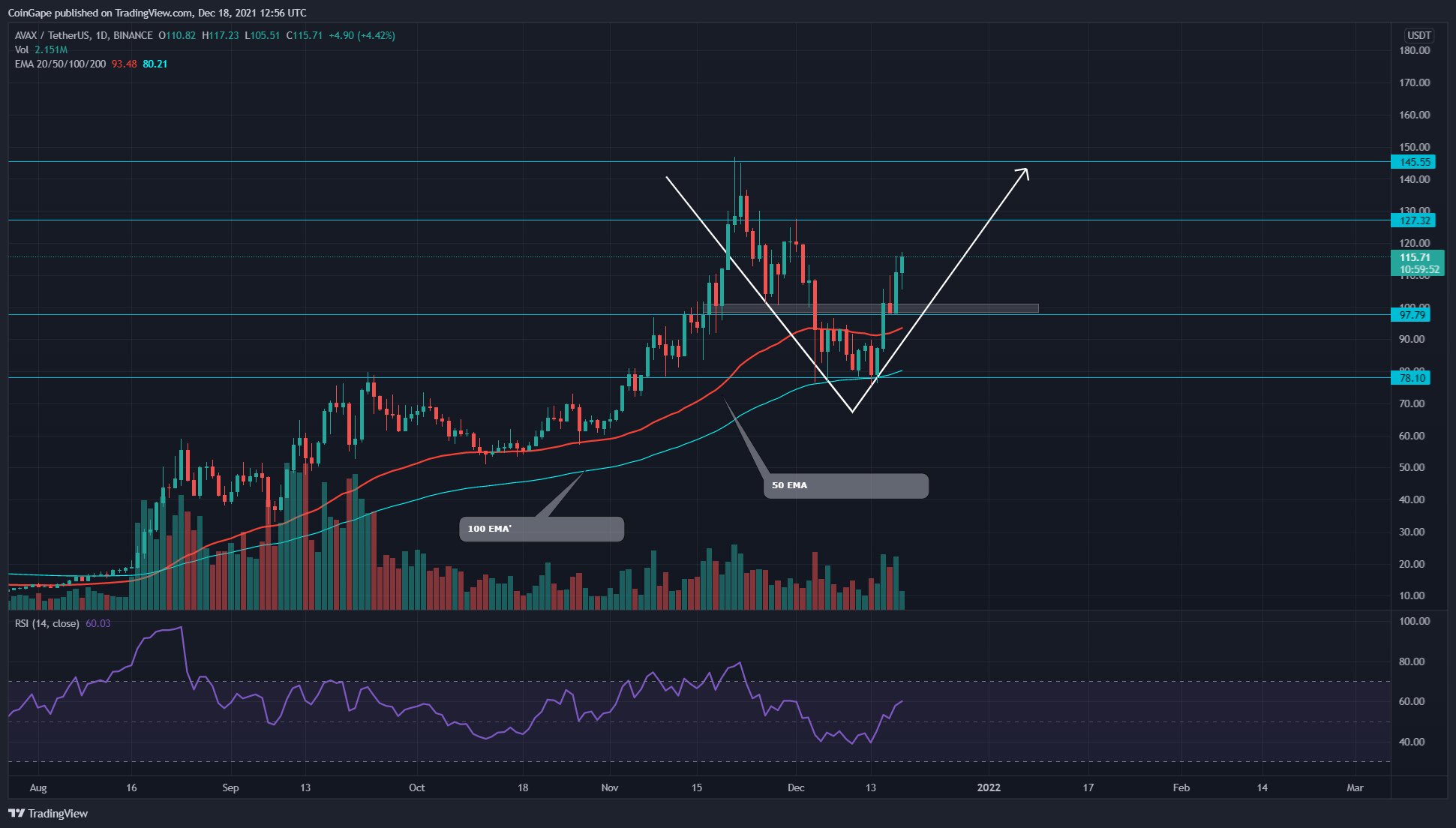Overview
Cryptocurrencies have revolutionized the financial world, offering decentralized and secure transactions. However, as the popularity of digital assets grows, so does the need to bridge the gap between different blockchain networks. Bridging in crypto refers to the process of connecting two or more blockchain networks to facilitate the transfer of digital assets seamlessly.
With bridging, users can transfer their assets across different blockchains, allowing for increased interoperability and liquidity within the crypto space. This technology has gained traction due to its ability to enable cross-chain transactions, opening up new possibilities for decentralized finance (DeFi), decentralized applications (DApps), and other blockchain-based services.
By bridging different blockchain networks, users can enjoy the benefits of various platforms and access a broader range of assets. Bridging eliminates the need for intermediaries, reduces transaction costs, and enhances speed and efficiency in asset transfers.
This article will delve into the concept of bridging in crypto, explain how it works, discuss its advantages and common use cases, and address the challenges and risks associated with this technology. We will also explore different types of bridging protocols and provide examples of popular bridging platforms. Additionally, we will highlight the security considerations that users should keep in mind when engaging in bridging activities.
Whether you are an investor, a developer, or simply curious about blockchain technology, understanding bridging in crypto is essential to harness the full potential of digital assets. So, let’s dig deeper into the world of crypto bridging and explore its exciting possibilities.
Definition of Bridging in Crypto
Bridging in crypto refers to the process of connecting and facilitating the transfer of digital assets between different blockchain networks. It enables seamless transfer and interoperability of assets across various decentralized platforms.
In simple terms, bridging allows users to move their assets from one blockchain network to another without relying on centralized exchanges or intermediaries. This decentralized approach ensures greater control, transparency, and security for users.
At its core, bridging involves the creation of a bridge or connector that acts as a link between different blockchains. This bridge is built using specialized software protocols, smart contracts, or interoperability solutions to enable the smooth transfer of assets.
When a user wishes to bridge their assets, they initiate the process by locking up their tokens on the source blockchain. These locked tokens are then “bridged” or transferred to the corresponding blockchain, where they can be easily accessed and utilized. This process is typically reversible, allowing users to bridge back their assets to the original blockchain if desired.
It is important to note that bridging is not limited to a specific type of asset. It can involve the transfer of various digital assets, including cryptocurrencies, tokens, or even non-fungible tokens (NFTs), between different blockchain networks.
Furthermore, bridging can take place between blockchains with similar or different underlying technologies. This means that assets can be moved between networks based on Ethereum, Bitcoin, Polkadot, or other blockchain platforms, depending on the compatibility and supported protocols.
Overall, bridging in crypto plays a crucial role in enabling cross-chain transactions, promoting interoperability, and expanding the utility and liquidity of digital assets. It provides users with more flexibility in managing their assets and opens up new opportunities in the rapidly evolving decentralized ecosystem.
How Does Bridging Work?
Bridging in crypto involves a series of steps that enable the transfer of digital assets between different blockchain networks. While the specific implementation may vary depending on the bridging protocol or platform used, the general process typically includes the following key elements:
- Asset Locking: The bridging process starts with the user locking their assets on the source blockchain. This involves sending the assets to a specific address or smart contract, where they are held securely until the bridging is complete.
- Verification: Once the assets are locked, the bridging protocol performs a series of verifications. These include verifying the authenticity and ownership of the assets, ensuring they meet the required criteria for bridging, and conducting any necessary compliance checks.
- Bridge Transaction: After the verification process, a bridge transaction is initiated. This transaction transfers the locked assets from the source blockchain to the destination blockchain. This transaction can involve the use of smart contracts, special algorithms, or other cryptographic mechanisms to ensure the secure and accurate transfer of assets.
- Asset Unlocking: On the destination blockchain, the bridged assets become available for the user to access and utilize. This may involve interacting with smart contracts or specific protocols to unlock the assets and make them usable within the new blockchain ecosystem.
- Reversible Process: In most cases, the bridging process is reversible, allowing users to bridge back their assets from the destination blockchain to the source blockchain. This adds flexibility and convenience for users, as they can freely move their assets between different networks as needed.
It’s important to note that the technical implementation of bridging can vary based on the specific bridging protocol or platform. Some platforms may utilize specialized bridging tokens or utilize specific consensus mechanisms to ensure the integrity and security of the bridging process.
Additionally, different bridging platforms may have varying levels of interoperability between blockchains. Some platforms may support only specific blockchains or have limitations on the types of assets that can be bridged. Other platforms may strive for a more comprehensive and decentralized approach, aiming to bridge assets across multiple blockchains within the crypto ecosystem.
Overall, bridging in crypto relies on a combination of secure protocols, smart contracts, and cryptographic mechanisms to enable seamless asset transfers between different blockchain networks. By bridging their assets, users can leverage the benefits of multiple blockchain platforms, enhance liquidity, and explore new opportunities within the decentralized landscape.
Advantages of Bridging in Crypto
Bridging in crypto offers several significant advantages that contribute to the growth and development of the digital asset ecosystem. Here are some key advantages of bridging:
- Increased Interoperability: Bridging allows for the seamless transfer of digital assets between different blockchain networks. This interoperability enhances the flexibility and utility of assets, enabling users to access a wider range of services, platforms, and opportunities.
- Expanded Market Access: By bridging assets, users can tap into multiple blockchain networks and gain exposure to various cryptocurrencies, tokens, or other digital assets. This access provides greater diversification and the ability to explore new investment opportunities.
- Reduced Dependency on Centralized Exchanges: Bridging eliminates the need to rely solely on centralized exchanges for asset transfers. This decentralized approach reduces counterparty risks, enhances security, and empowers users to have direct control over their assets.
- Improved Liquidity: Bridging fosters liquidity by enabling the flow of assets across different blockchain networks. This increased liquidity benefits traders, investors, and users who require quick and efficient access to assets, contributing to a more vibrant and dynamic market.
- Cost Savings: Bridging can significantly reduce transaction costs compared to traditional methods of asset transfers. By bypassing intermediaries and utilizing decentralized protocols, users can avoid hefty fees associated with traditional financial systems.
- Speed and Efficiency: Bridging enables faster and more efficient asset transfers compared to traditional methods. By leveraging blockchain technology and smart contract automation, bridging transactions can be executed with greater speed and accuracy.
- Enhanced DeFi Capabilities: Bridging plays a vital role in decentralized finance (DeFi) by facilitating cross-chain transactions and enabling interoperability between various DeFi protocols. This interoperability expands the possibilities for lending, borrowing, yield farming, and other DeFi activities.
- Innovation and Collaboration: Bridging encourages collaboration between different blockchain networks and promotes innovation within the crypto space. By bridging assets, developers and projects can leverage the strengths and features of multiple blockchains, leading to new advancements and opportunities.
These advantages highlight the immense potential and benefits that bridging brings to the crypto ecosystem. As the technology continues to evolve, bridging is expected to play a pivotal role in fostering interoperability, driving innovation, and shaping the future of decentralized finance.
Common Use Cases of Bridging
Bridging in crypto has numerous practical use cases that have gained popularity within the blockchain community. These use cases demonstrate the versatility and potential of bridging technology. Let’s explore some of the common use cases of bridging:
- Cross-Chain Asset Transfers: The primary use case of bridging is to facilitate cross-chain asset transfers. Users can bridge their assets between different blockchain networks, allowing for increased liquidity and access to a wider range of investment opportunities.
- Decentralized Exchanges (DEXs): Bridging is instrumental in enabling interoperability between decentralized exchanges. It allows users to trade assets from different blockchains seamlessly. Bridging also supports liquidity pools and the creation of market-making strategies.
- Leveraging Multiple DeFi Protocols: Bridging opens up new possibilities in decentralized finance (DeFi) by allowing users to leverage multiple DeFi protocols across different blockchain networks. For example, users can supply assets as collateral in one DeFi protocol and borrow against them in another protocol.
- Token Swaps and Atomic Swaps: Bridging enables efficient token swaps between different blockchain networks without the involvement of intermediaries. Atomic swaps, a specific type of token swap, allow for trustless cross-chain transactions between compatible blockchain networks.
- Scaling Solutions: Bridging can be utilized to achieve scalability in blockchain networks. By bridging assets to a secondary blockchain with faster transaction speeds or lower fees, users can enjoy a seamless experience while mitigating congestion issues.
- Interoperable NFTs: Bridging technology can extend to non-fungible tokens (NFTs), allowing for cross-chain interoperability. This means that NFTs created on one blockchain can be bridged to other blockchains, expanding their reach and accessibility.
- Chain Hopping: Chain hopping is a use case where users bridge their assets between different blockchains to take advantage of specific features or opportunities. For instance, users may bridge their assets to a blockchain known for its advanced smart contract capabilities or vibrant ecosystem.
- Blockchain Upgrades and Migrations: Bridging can be utilized to facilitate smooth blockchain upgrades or migrations. By bridging assets from the old blockchain to the new blockchain, users can seamlessly transition without disrupting their holdings or activities.
These use cases represent just a fraction of the potential applications and benefits that bridging provides within the crypto space. As blockchain technology continues to evolve, new innovative use cases for bridging are likely to emerge, expanding the possibilities of decentralized finance, cross-chain interactions, and asset management.
Challenges and Risks Associated with Bridging
While bridging in crypto offers numerous benefits, it also presents certain challenges and risks that users should be aware of. Understanding these challenges is essential for making informed decisions. Here are some common challenges and risks associated with bridging:
- Security Vulnerabilities: Bridging introduces additional points of vulnerability and potential security risks. The process relies on smart contracts, interoperability protocols, and bridges, which may be susceptible to hacking, bugs, or vulnerabilities. Users must exercise caution and choose reputable bridging platforms.
- Interoperability Limitations: Not all blockchain networks are fully compatible or readily interoperable. Bridging between blockchain networks with different underlying technologies and consensus mechanisms may pose technical challenges and limitations, leading to potential delays or restrictions in asset transfers.
- Smart Contract Risks: Bridging often involves the use of smart contracts, which are subject to coding errors or vulnerabilities. Flawed smart contracts can result in asset loss, manipulation, or unintended consequences. Thorough audits and due diligence should be conducted on smart contracts before engaging in bridging activities.
- Reliance on Oracles: Bridging may require the use of oracles, which are trusted sources of external data used to execute smart contracts. However, oracles can introduce centralization and single points of failure, posing risks of data manipulation or compromise. Choosing reliable and decentralized oracles is crucial for maintaining the integrity of bridging transactions.
- Transaction Delays and Costs: Bridging may incur additional transaction fees and delays compared to native transactions within a single blockchain network. These costs and delays can vary depending on the bridging protocol used, network congestion, and the complexity of the bridging process.
- Regulatory and Compliance Considerations: Bridging assets across different blockchain networks can present regulatory and compliance challenges. It is important to be aware of the legal landscape and regulatory requirements of each jurisdiction involved to ensure compliance with anti-money laundering (AML) and know-your-customer (KYC) regulations.
- User Error and Loss of Assets: Mistakes made during the bridging process, such as entering incorrect addresses or interacting with malicious contracts, can result in the permanent loss of assets. Users must exercise caution and double-check all transaction details before initiating the bridging process.
- Limited User Support: Bridging is still an emerging technology, and comprehensive user support may be limited. Users may face challenges in troubleshooting issues or receiving timely assistance, especially when dealing with complex bridging procedures.
It is crucial for users to evaluate these challenges and risks associated with bridging, conduct thorough research, and exercise caution when engaging in bridging activities. Taking appropriate security measures, understanding the technical aspects, and choosing trusted bridging platforms can help mitigate these risks and ensure a more secure and seamless bridging experience.
Types of Bridging Protocols
Bridging in crypto is facilitated by various protocols and technologies that enable the seamless transfer of assets between different blockchain networks. Here, we will explore some common types of bridging protocols:
- Wrapped Tokens: Wrapped tokens are a type of bridging protocol that involves the creation of an equivalent token on a different blockchain. The original tokens are locked on the source blockchain, while wrapped tokens are minted on the destination blockchain, representing the same value. This allows assets to be moved between blockchains while maintaining a consistent representation.
- Two-way Peg: The two-way peg is a bridging protocol that establishes a link between two blockchains, enabling assets to be transferred in both directions. This protocol ensures that the value of the bridged assets is maintained on both blockchains, allowing users to move their assets back and forth as needed.
- Sidechains: Sidechains are separate chains that are attached to the main blockchain, allowing assets to be transferred between them. Sidechains provide enhanced scalability and flexibility, enabling faster transaction confirmations and specialized functionalities while maintaining a strong connection to the main blockchain.
- Interoperability Protocols: Interoperability protocols, such as Polkadot or Cosmos, aim to facilitate communication and asset transfers between different blockchains. These protocols enable cross-chain messaging, allowing users to bridge assets and interact with applications across multiple blockchains within their network ecosystem.
- Atomic Swaps: Atomic swaps are a type of bridging protocol that enables the direct exchange of assets between users on different blockchains without the need for intermediaries. It utilizes smart contracts and time-locked transactions to ensure that both parties fulfill their obligations before the asset transfer occurs.
These bridging protocols provide different approaches to achieving interoperability and facilitate the seamless transfer of assets between various blockchain networks. Each protocol has its advantages and considerations, and the choice of protocol depends on specific use cases, technical requirements, and the desired level of decentralization.
It’s worth noting that the crypto space is continuously evolving, and new bridging protocols and technologies are being developed to address the challenges and needs of a rapidly expanding ecosystem. As blockchain technology advances, bridging protocols will continue to play a crucial role in enhancing interoperability and unlocking the full potential of decentralized finance and blockchain-based applications.
Examples of Popular Bridging Platforms
The growing demand for bridging in the crypto space has led to the development of several popular bridging platforms. These platforms provide users with the tools and infrastructure to bridge their assets across different blockchain networks. Here are a few examples of popular bridging platforms:
- Ren Protocol: Ren Protocol is a decentralized interoperability protocol that enables the transfer of assets between various blockchains. It utilizes a secure multi-party computation (MPC) algorithm to facilitate trustless transfers. Ren Protocol supports the bridging of a wide range of assets, including Bitcoin, Ethereum, and other popular tokens.
- Wrapped Bitcoin (WBTC): WBTC is an example of a wrapped token bridging platform that enables users to bridge Bitcoin (BTC) to the Ethereum blockchain. The original Bitcoin is locked in a custodial account, and WBTC tokens are issued on the Ethereum blockchain, allowing users to utilize BTC in the Ethereum ecosystem for various DeFi applications.
- Polkadot: Polkadot is a multi-chain platform that aims to provide interoperability between different blockchains. It utilizes a relay chain and parachains to facilitate the bridging of assets and the interaction between various blockchain networks. Polkadot allows for the transfer of assets and data between its connected chains, enabling a vibrant and connected ecosystem.
- Chainlink: While primarily known for its decentralized oracle network, Chainlink also plays a significant role in bridging data and assets between different blockchains. Chainlink’s oracle infrastructure provides reliable and tamper-proof data feeds, enabling smart contracts to interact with external data and trigger bridging transactions based on predefined conditions.
- Cosmos: Cosmos is an interoperable blockchain ecosystem that connects different blockchains through its Inter-Blockchain Communication (IBC) protocol. Cosmos enables assets to be transferred between its connected chains, allowing for seamless value exchange and decentralized application (DApp) interoperability across its network.
These platforms are just a few examples of the many bridging solutions available in the crypto space. Each platform has its unique features, supported assets, and technical considerations. It is important for users to research and choose a bridging platform that aligns with their specific requirements and provides the necessary security measures for asset transfers.
As the demand for bridging continues to grow, the development of new bridging platforms and protocols is expected to accelerate. These platforms will further enhance the interoperability and connectivity of blockchain networks, unlocking new opportunities and extending the possibilities within the decentralized ecosystem.
Security Considerations for Bridging
When engaging in bridging activities in the crypto space, it is crucial to prioritize security to protect your assets. Here are some important security considerations to keep in mind:
- Choose Reliable Bridging Platforms: Select established and reputable bridging platforms that have undergone thorough security audits and have a proven track record. Research the platform’s security measures, including their use of encryption, secure key management, and adherence to best practices.
- Verify Smart Contracts and Audits: If bridging involves interacting with smart contracts, ensure that they have undergone code audits by reputable security firms. Review the audit reports to understand any potential vulnerabilities and ensure that the smart contracts have been assessed for potential risks and flaws.
- Use Secure Wallets: Utilize hardware wallets or other secure cold storage solutions to store your private keys securely. This helps protect your assets from potential hacks or unauthorized access. Avoid sharing your private keys or sensitive information with anyone.
- Double-Check Transaction Details: Before initiating a bridging transaction, double-check all the transaction details, such as addresses and amounts, to ensure accuracy. Verify that the destination and source addresses are correct and match the intended transfer. Mistaken transactions can result in irreversible loss of assets.
- Implement Multi-Factor Authentication (MFA): Enable MFA wherever possible to add an extra layer of security to your accounts. This typically involves requiring a verification code or physical device in addition to your password for account access.
- Stay Informed about Security Threats: Stay updated on the latest security threats and vulnerabilities in the crypto space. Regularly check security announcements, follow reputable security blogs, and join community forums to stay informed about potential risks and mitigation strategies.
- Beware of Phishing Attempts: Be cautious of phishing attempts where malicious actors try to trick you into disclosing your sensitive information. Avoid clicking on suspicious links or sharing your personal details with unknown sources. Always verify the authenticity of the website or platform before entering any sensitive information.
- Keep Software Up to Date: Ensure that your devices and wallets are running the latest software versions. Updates often include security patches that address known vulnerabilities. Regularly check for updates and apply them promptly to maintain the highest level of security.
- Perform Test Transactions: Before initiating significant bridging transactions, consider performing smaller test transactions to ensure the process works as expected. This allows you to familiarize yourself with the workflow, confirm the accuracy of the process, and minimize potential risks.
By following these security considerations, you can significantly reduce the risks associated with bridging and safeguard your assets. Remember that security is a continuous process, and staying vigilant and proactive is essential to protect your funds in the evolving landscape of cryptocurrencies and blockchain technology.
Conclusion
Bridging in crypto has emerged as a vital technology that connects different blockchain networks, allowing for seamless transfer and interoperability of digital assets. By bridging their assets, users can unlock new possibilities, enhance liquidity, and access a wider range of investment opportunities.
In this article, we explored the concept of bridging in crypto, understanding how it works and the advantages it offers. We discovered that bridging eliminates the need for intermediaries, enhances speed and efficiency, and promotes cross-chain transactions.
We also discussed the common use cases of bridging, including cross-chain asset transfers, leveraging multiple DeFi protocols, and the importance of interoperability in the NFT market.
However, it’s important to be aware of the challenges and risks associated with bridging, such as security vulnerabilities, interoperability limitations, and regulatory considerations. By understanding these challenges and taking appropriate security measures, users can mitigate potential risks and enjoy a more secure bridging experience.
Lastly, we explored some examples of popular bridging platforms, including Ren Protocol, Wrapped Bitcoin (WBTC), Polkadot, Chainlink, and Cosmos. These platforms provide the infrastructure and protocols necessary for bridging assets between different blockchain networks.
As the crypto space continues to evolve, bridging technology will play a crucial role in fostering interoperability, driving innovation, and promoting the seamless transfer of assets across multiple blockchain networks. By staying informed, following best practices, and choosing reliable bridging platforms, users can tap into the full potential of bridging and navigate the decentralized landscape with confidence.

























